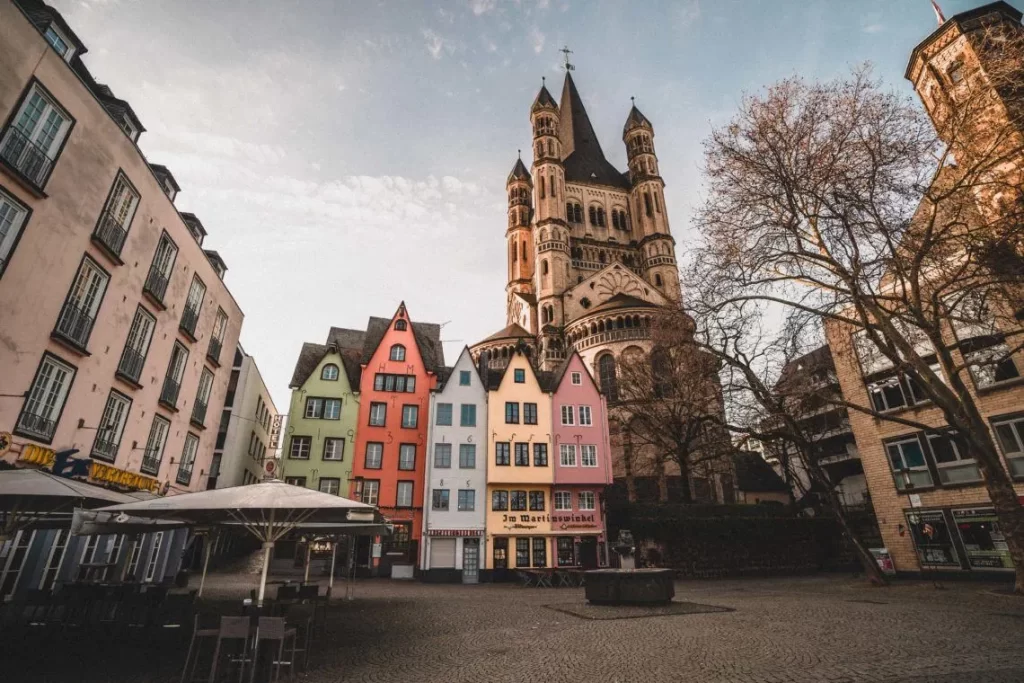
Homesick for Cologne
This day in Cologne Germany started pretty rainy and gloomy. We were grouped up and sent off with a local guide for a walking tour, beginning at the site of the historic Fischmarkt Köln. Here we were greeted by these candy colored buildings.

This city was full of contrasts. The grandeur of the church of St. Martin looming over the nursery colors of the Market buildings was a striking.

The design of the church you see was largely conceived of during the 12th-century, but was reconstructed following heavy bomb damage during World War II. Unlike most of the little towns and villages we have visited previously which had escaped a majority of damage, Cologne was devastated during this conflict. We’ll look more at this later.
We proceeded to the Alter Markt, or the Old Market in the heart of the Old Town.
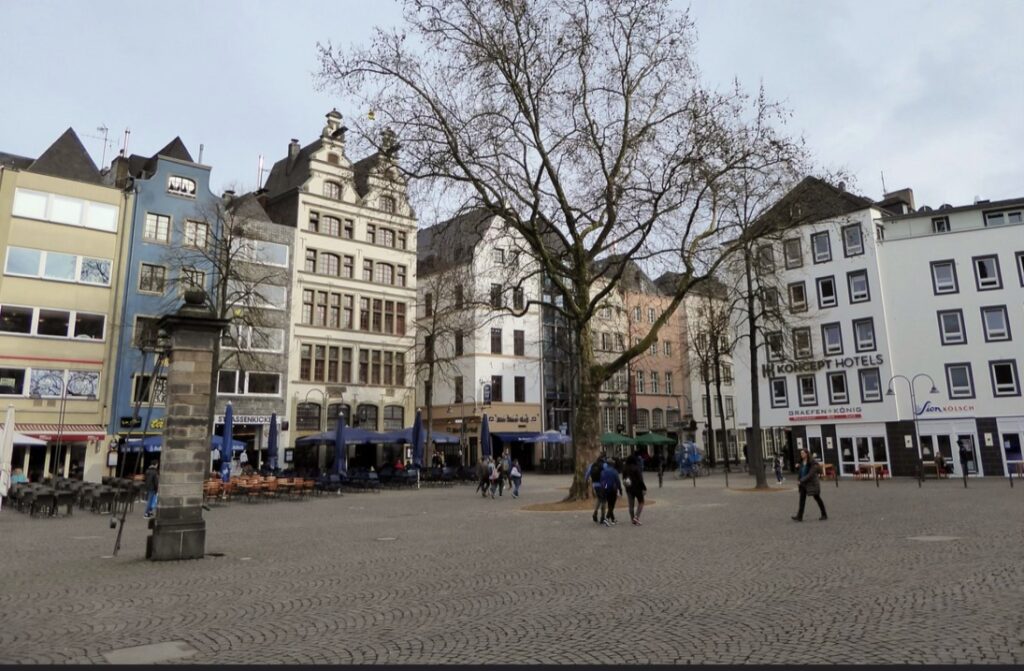
This area is home to the Christmas Market during winter but is perhaps best known for the Carnival which begins at 11:11am on the 11th day of the 11th month. This is when Cologne goes completely bonkers and hoards of Jecken, or madmen, storm the town hall.
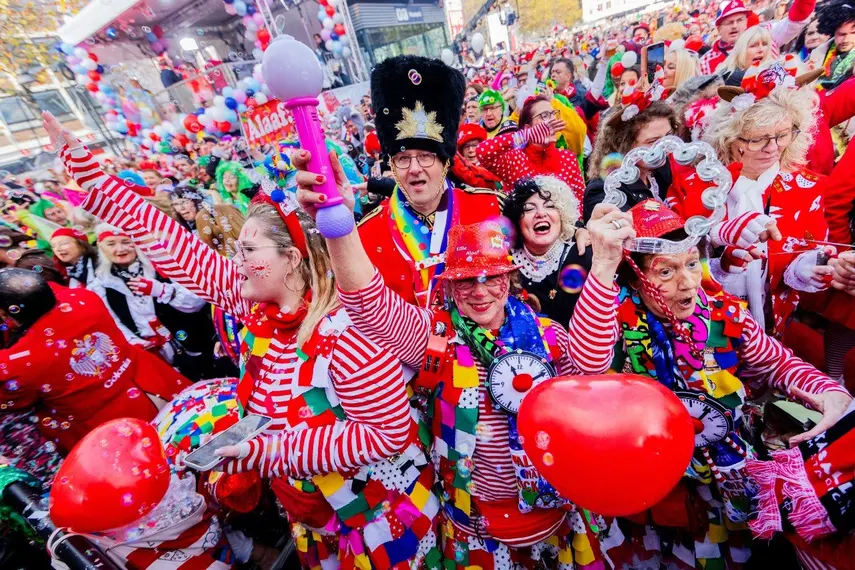
From what I’ve read it’s an opportunity to go nuts, drink beer and thumb their noses at authority. Our guide brought us around to a few of the statues in the Market. Further cementing how serious the Colognians take Karnival, there’s a monument in honor of Willi Ostermann, the author of the official song of the festival “Heimwih noh Kölle” (Home-sick for Cologne).
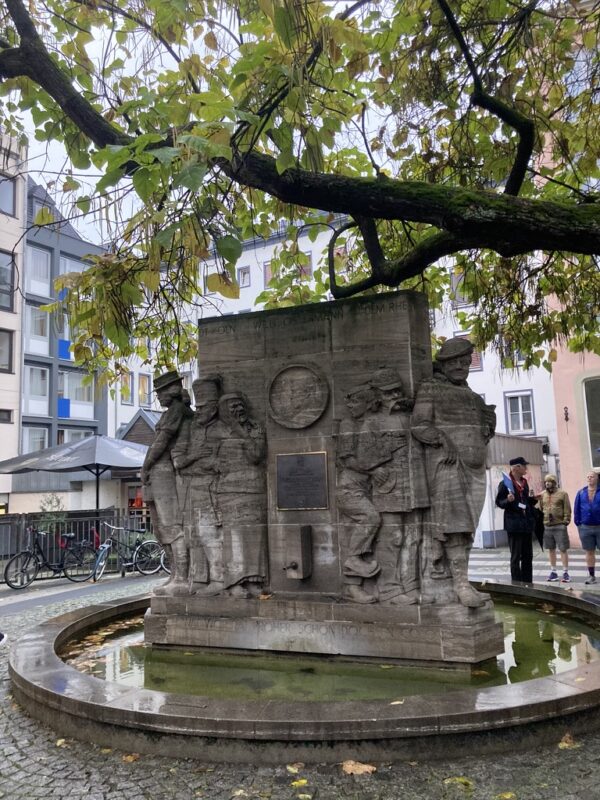
The people of Cologne seem to love to push back against the upper crust. When we were gathered outside of the Cologne Town hall (the Kölner Rathaus) we were instructed to keep our eye on the “Platzjabbeck”, the wooden face sculpture on the facade. This guy opens its mouth and sticks out its tongue when the tower clock strikes the hour. Funny, yes, but it’s got nothing on one of the other sculptures which also dons the building.
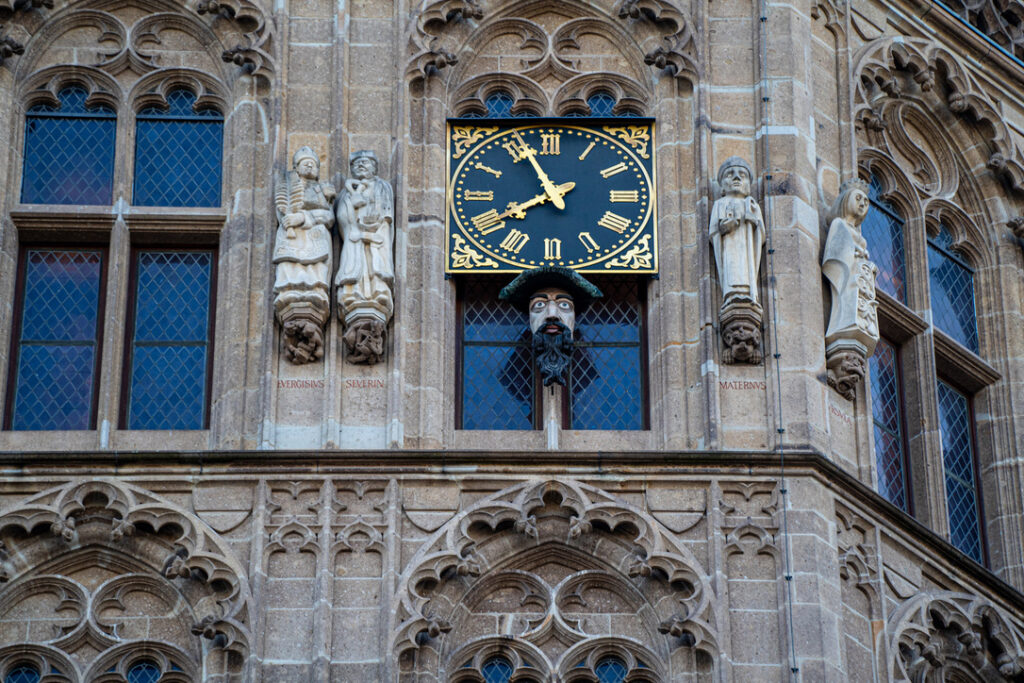
The Tower of the Town Hall includes 133 statues of people related to the history of Cologne. The medieval building, almost destroyed in the Second World War, was finally reconstructed in 1975 followed by the completion of the replicated statues in the late 1980s.
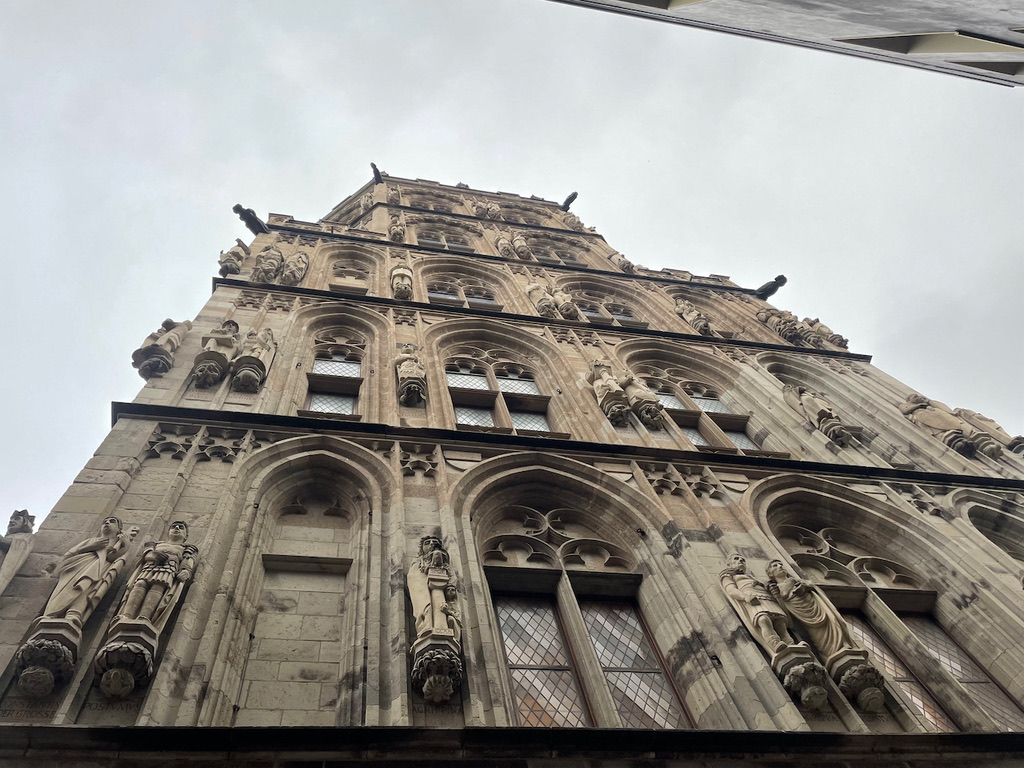
Amazingly, this reconstruction included this obscene carving hidden beneath the statue of Archbishop Konrad von Hochstadenthe. Be prepared to clutch your pearls.
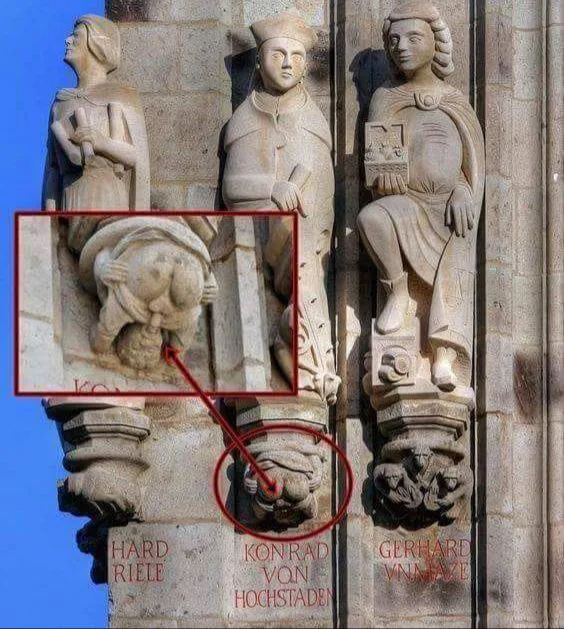
Apparently Archbishop Konrad was very unpopular among the good people of Cologne due to the tax he implemented on hops, indirectly taxing beer. According to my research, such mocking statues were tolerated by the local authorities under the condition that they were not clearly visible. They were placed high up on buildings, in dark corners, or underneath bigger statues like with our self-fellating friend above.
While most of the city of Cologne was destroyed by bombing during World War II, ironically, beneath it still lives the remnants of the first century Roman city that preceded it. Over the centuries buildings and roads were just constructed right over the ancient foundations. Even as recently as the 1960s there was little regard for the historical significance of these structures. Beneath the Cologne Cathedral is a functional parking garage that was just wedged in around these ancient Roman ruins.
The Romano-Germanic Museum (which was sadly closed while we were visiting) was established in 1974 on the former site of an ancient Roman Villa. They are now responsible for excavating and preserving these treasures.
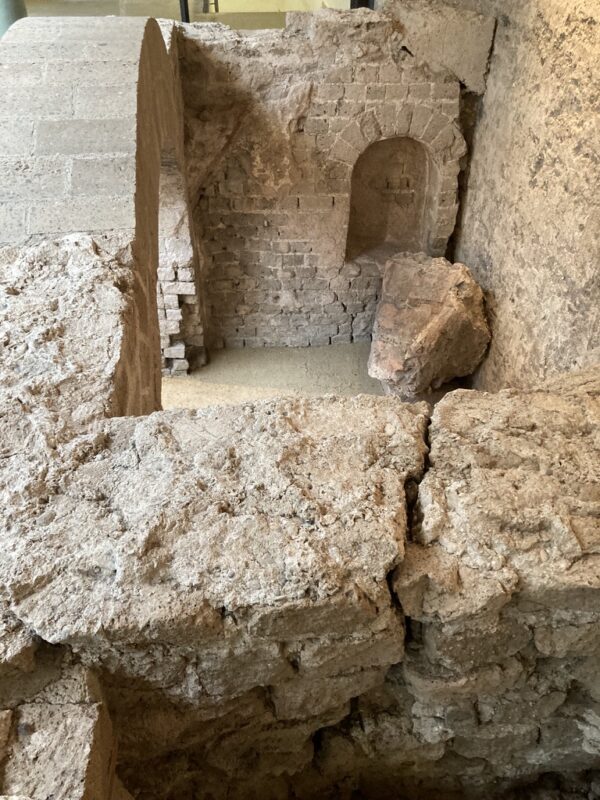
During the construction of that 1960s underground parking garage that we talked about earlier, a portion of a Roman road was discovered by chance. The garage entrance seemed more important at the time so the road was moved five meters to the south. The stones were numbered so they could be assembled correctly, but they were made with chalk so the rain just washed the markings away. As a result, the workers just placed the stones any old way. Romans were considered experts in road building so I’m going to assume that this isn’t what they intended.
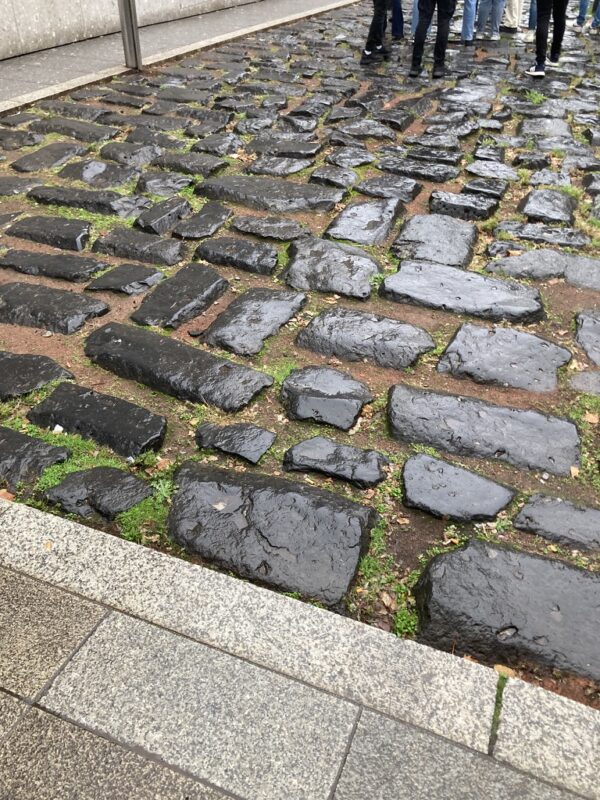
The Cologne Cathedral is the center piece of this city on the Rhine. You may recall that when we visited Strasbourg, that cathedral just bowled me over. I had never before seen a man made creation so enormous and so grand. This church is actually a dozen meters taller and certainly every bit as stunning as Strasbourg. It only suffered for being the second one we viewed.

The cornerstone of this Gothic cathedral was laid on the Feast of the Assumption of Mary in 1248 and finally completed in 1880. That’s almost as long as it took to finish the Big Dig. Sorry international readers, that’s some local humor.
Cologne was pummelled during the Second World War and ninety five percent of the city was completely destroyed. Despite fifteen aerial bombings, the cathedral survived intact but badly damaged. Its stained glass windows and artistic treasures had thankfully been moved to a safe place prior to the bombing raids.
I have to be honest with you, friends. I really didn’t appreciate Cologne as much as I should have while we were there. Other than the Cathedral, the city didn’t seem terribly different from other modern centers. The rainy weather didn’t allow us to explore very much and the Roman-German museum (a significant attraction for this city) was closed for renovations at the time. It wasn’t until I was back home researching for this installment that I got a real understanding of this city.
I was completely sobered when I found this footage of a tank battle which took place at the foot of the Cologne Cathedral. This place, right where we stood, was the scene of absolute devastation beyond comprehension. In just 87 years this mighty city has been rebuilt and stands tall and proud.
Please take a moment to watch this astonishing video capturing the Battle of Cologne.
We found a nicely covered patio right outside of the cathedral for a cappuccino and respite from the drizzle. We had a bit of time to pass before our guided pub crawl.
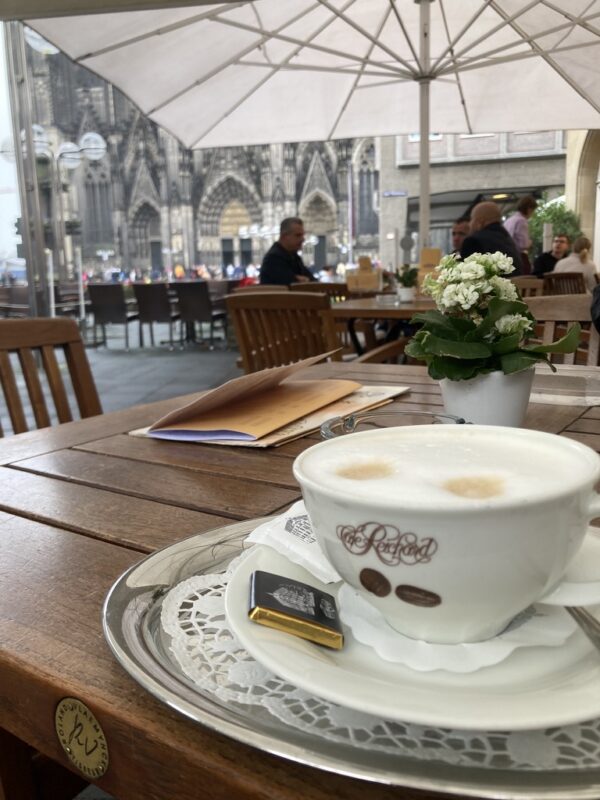
Cologne Germany is known for its beer called Kölsch. To be considered such, it must be made within 50 kilometers of the city of Cologne. Kölsch is warm fermented with top-fermenting yeast, then conditioned at cold temperatures like a lager, so I’m told.
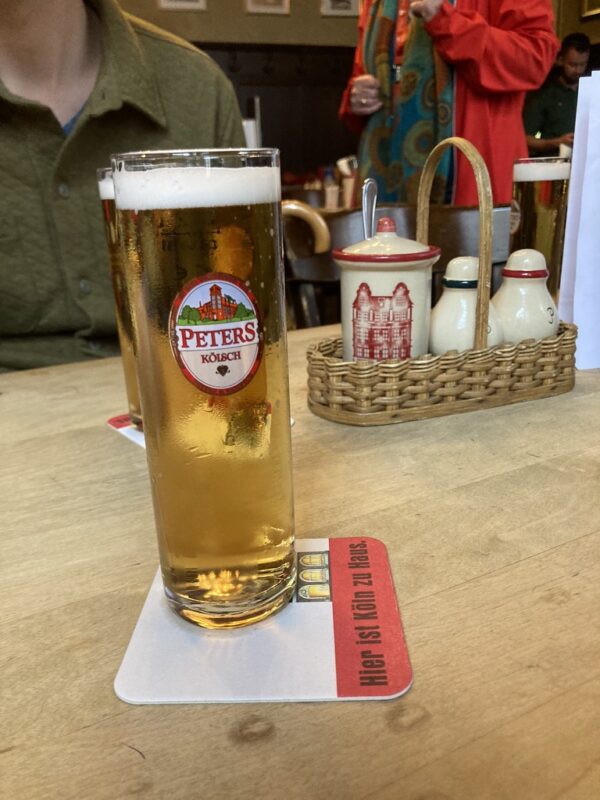
Kölsch is traditionally served in a tall cylindrical glass called a “stange,” or pole. As the story goes, these ales are served in small glasses because they lose their flavor as they sit. Instead of waiting for the drinker to order a refill, the servers or Köbes will just bring you another beer and make a tick on the coaster under the Stange. When the patron is finished, they place the coaster on top of the empty Stange and pay for the number of beers marked on the coaster.
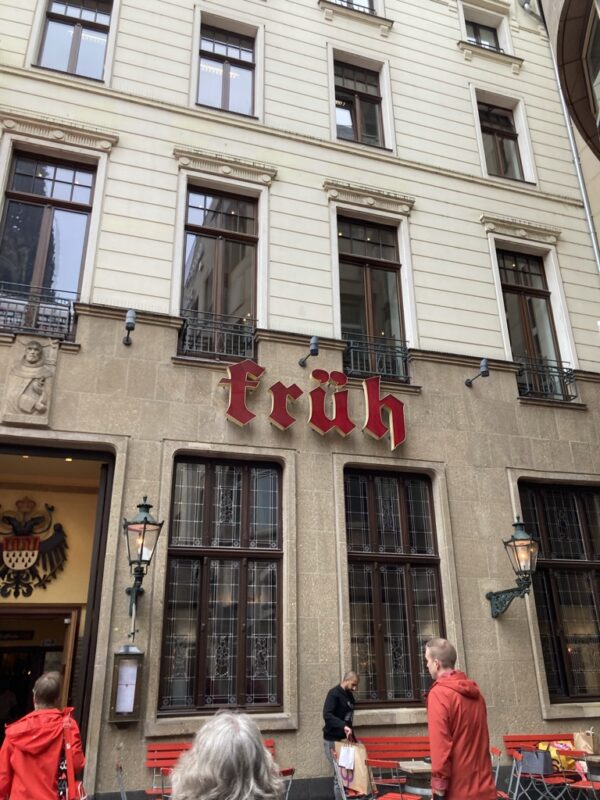
We crawled, as it were, over to the next brewery above call Früh. I hopped over to their website and found this description that gave me a chuckle.
“The Cölner Hofbräu P. Josef Früh KG has been around for over 100 years. Since then, it has been standing for Cologne hospitality opposite Cologne Cathedral, for over 100 years of Cologne’s history and more than 100 years of family tradition – and above all, for more than 100 years of delicious Kölsch beer.“
Quiz: How long have they been brewing Kölsch? Correct!
I had enjoyed so many fantastic Non-alcoholic beers on this trip so far. However, here in Cologne they didn’t seem to have any, or at least not where we went. They instead gave me a drink that’s designated for toddlers.
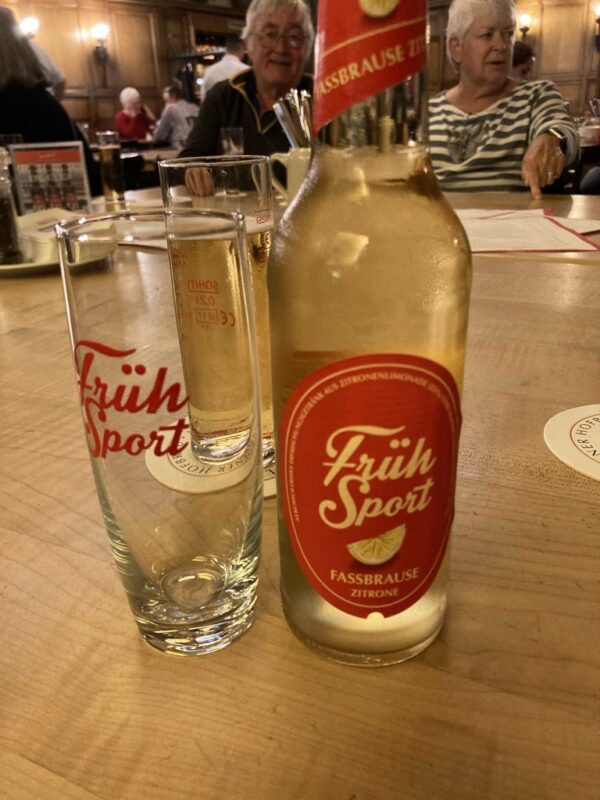
We made our way back where we began, to the Fischmarkt at the river, and meandered back to the boat for lunch.
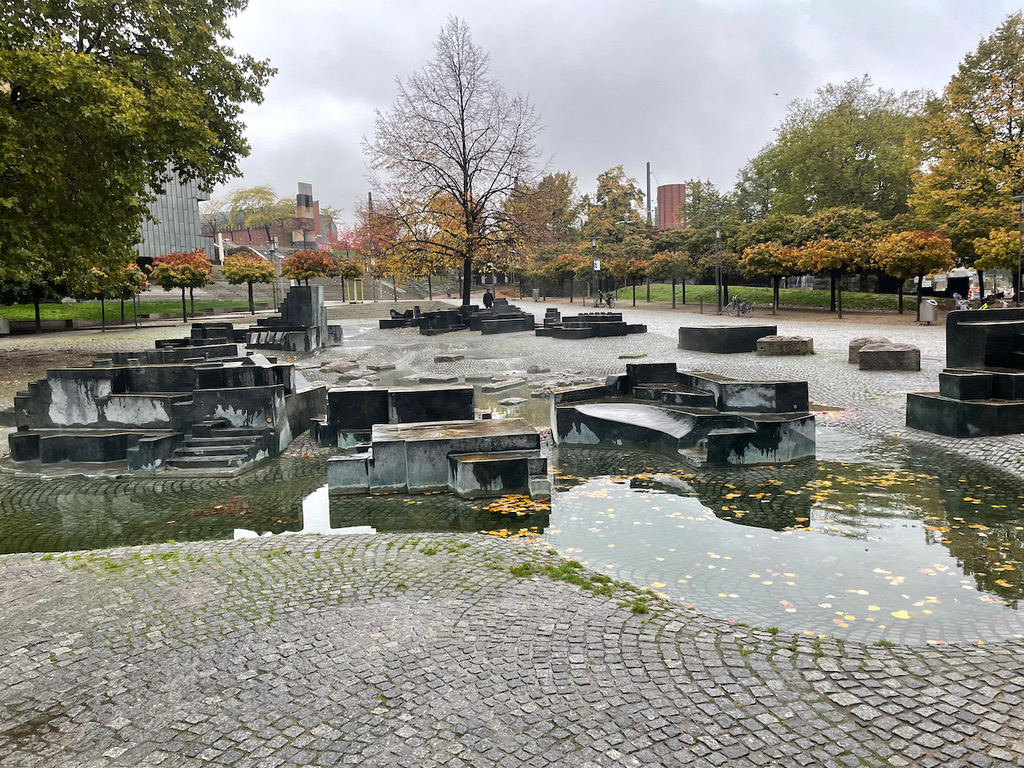
While lunch was served everyday on the ship, up until today we chose to stay out and about and enjoy the town/city we were visiting. I’m not sure if this was the kind of family style feast served each day, but oh my!
After lunch we retired to our room for a rest. Before that, I grabbed myself a cappuccino from this marvelous machine in the lounge. It makes about a zillion different variations of coffee drinks and I had about as many. Being on an “all you care to imbibe” wine cruise as a newly minted non-drinker had the potential to be a challenge. This coffee was a real treat.
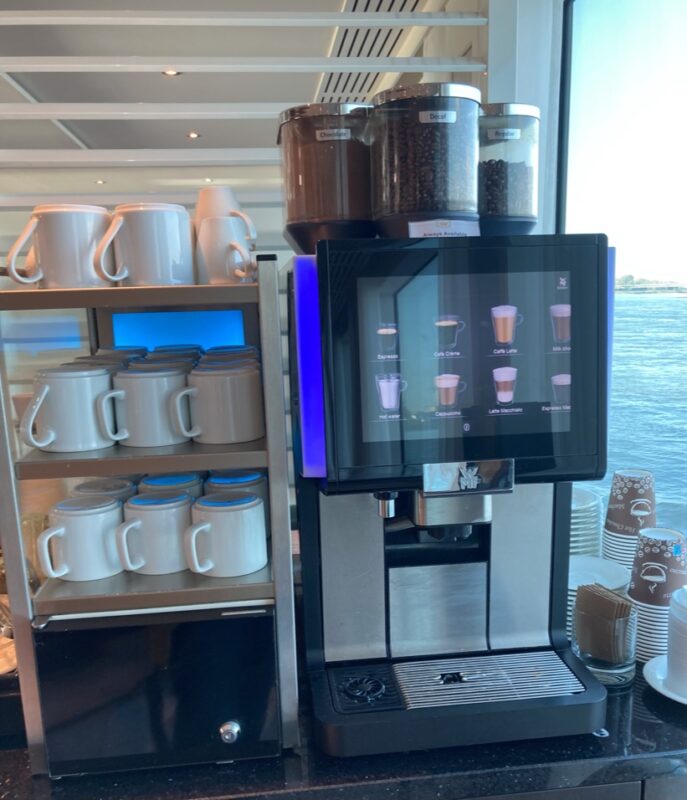
By this time the clouds had cleared away. We began our longest leg of the cruise up to the Netherlands. I enjoyed these bucolic views from our balcony while I sipped on my cappuccino.
Time passed…
It was time for our penultimate dinner. On this night I somehow remembered to photograph nearly every course. I can’t stress enough how delectable everything was.
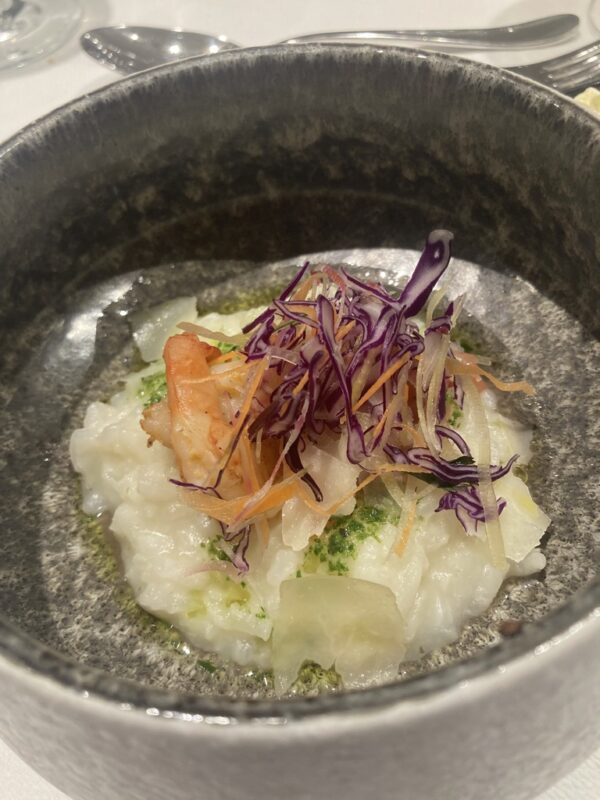
Risotto with shrimp and lime. 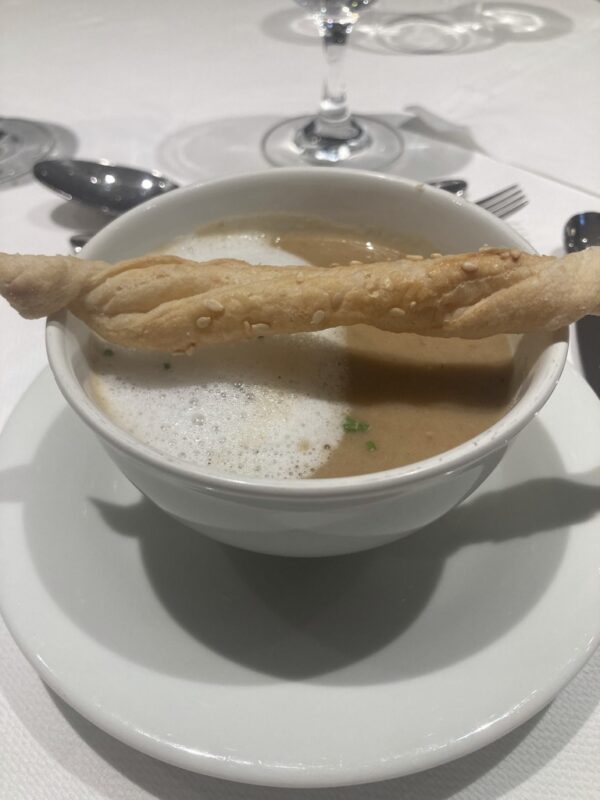
Porcini Mushroom Soup
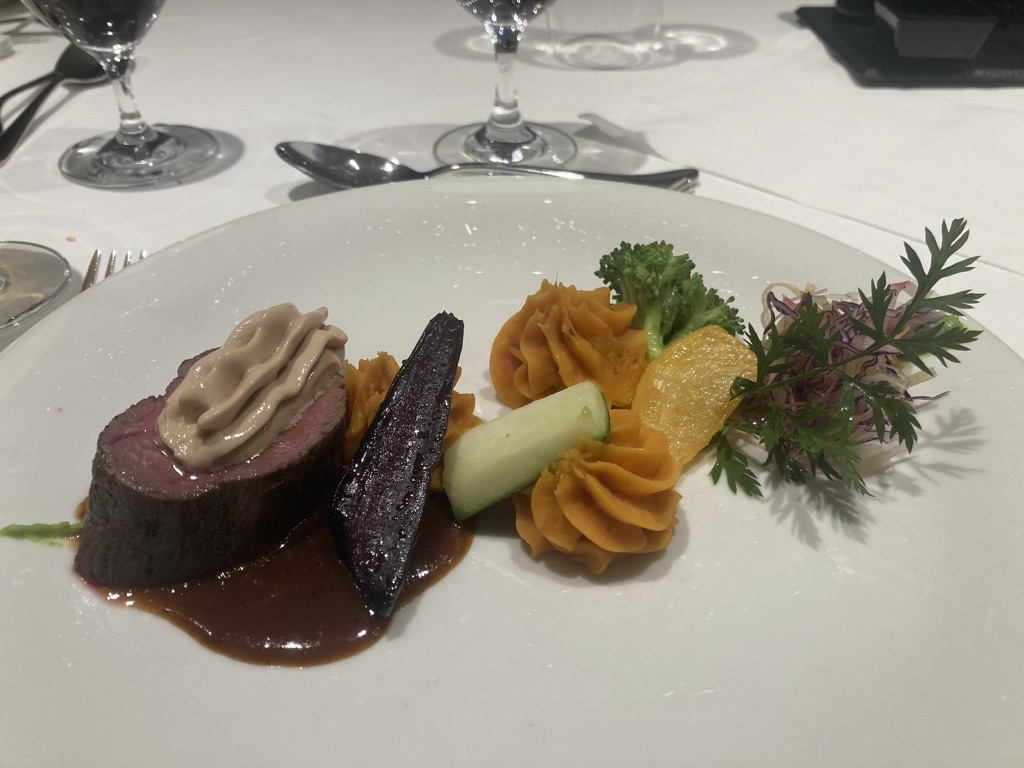
We will be up and at ’em early tomorrow to be reunited with our favorite city, Amsterdam. This will be the grand finale of a grand adventure!


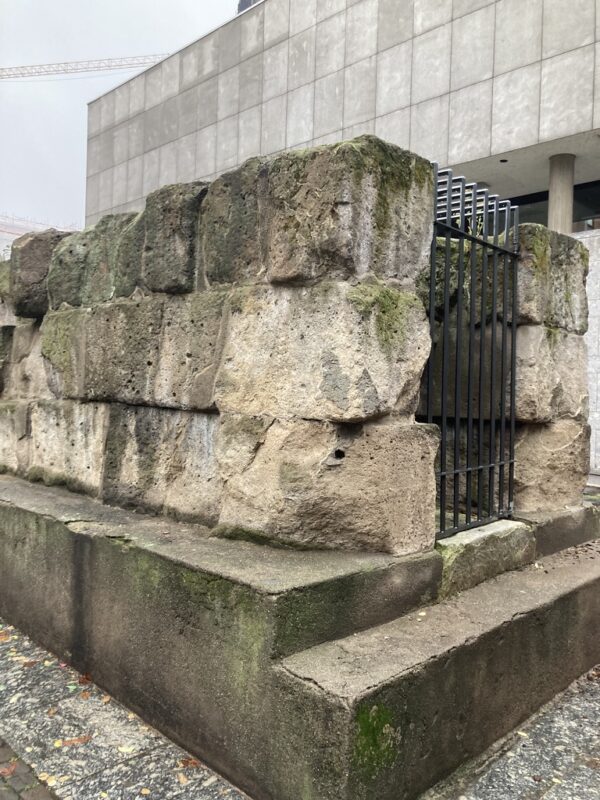
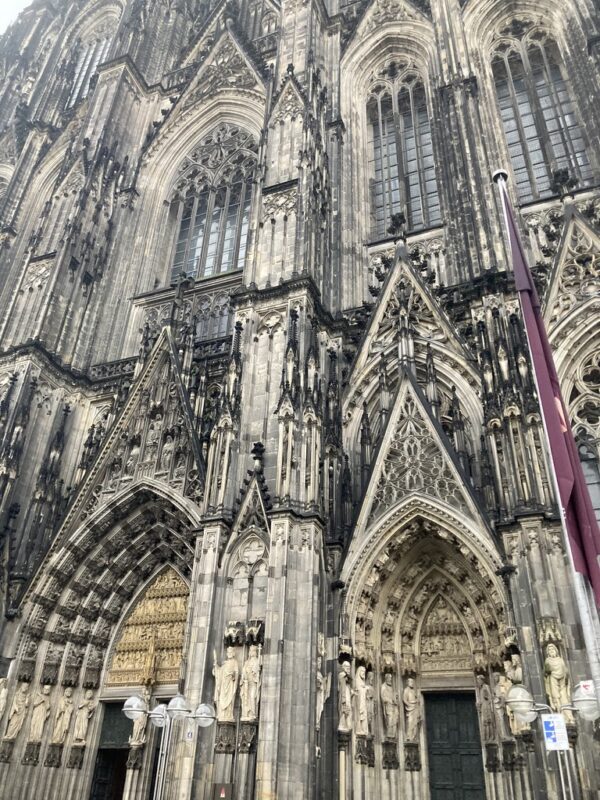
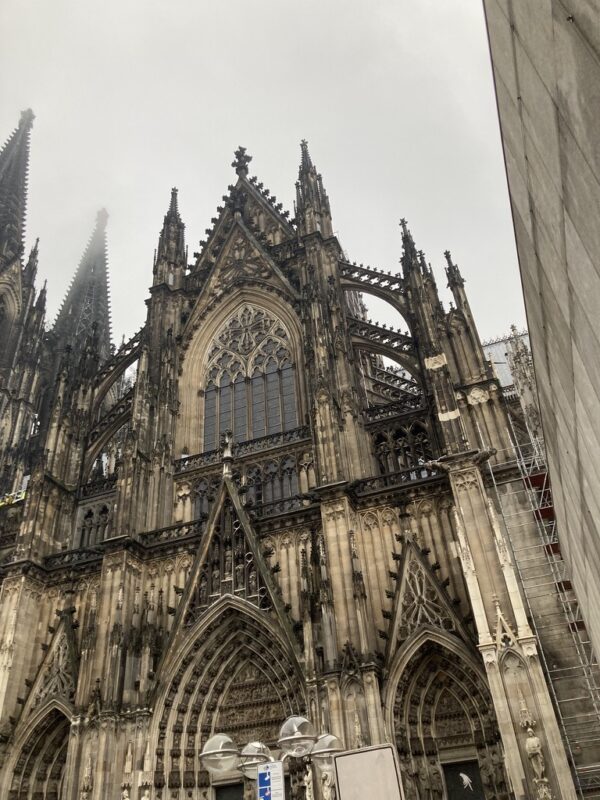

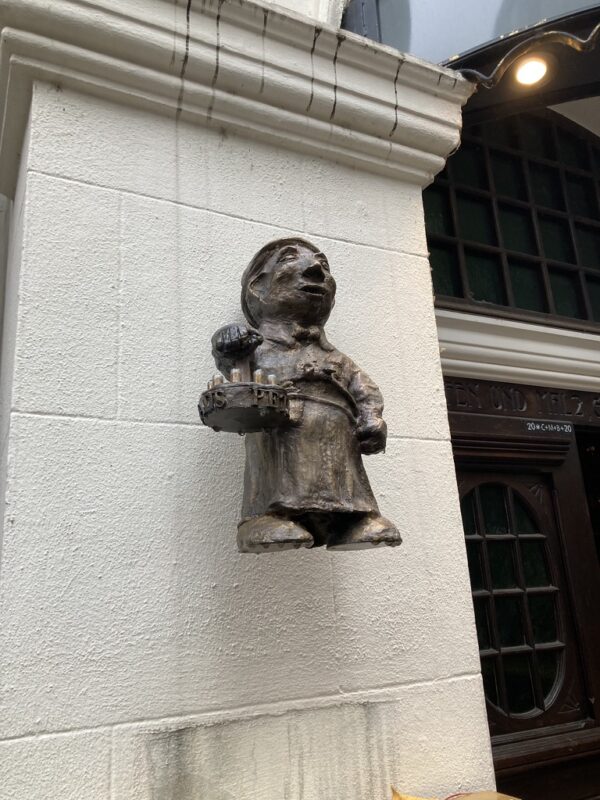
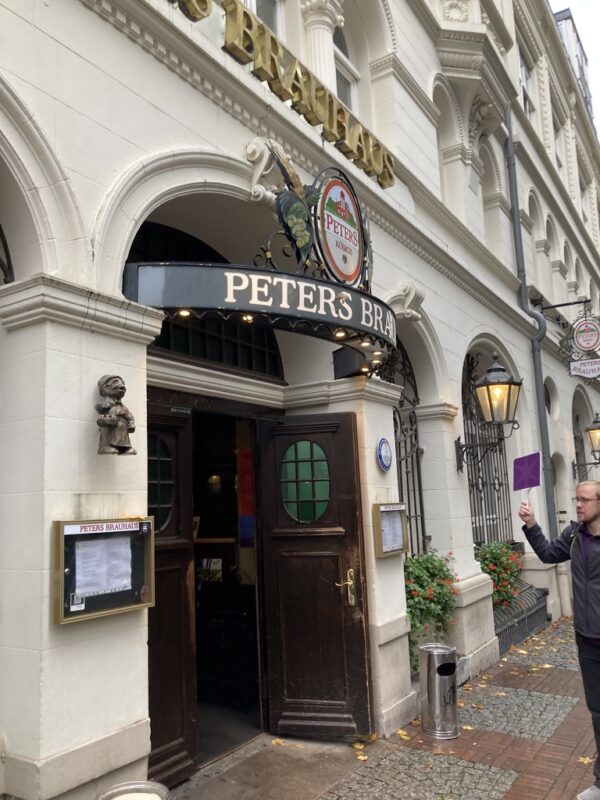
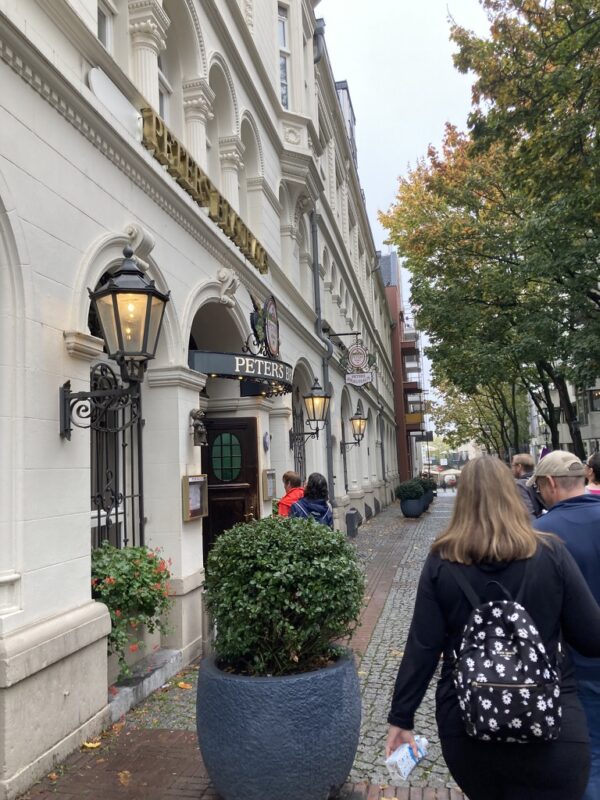

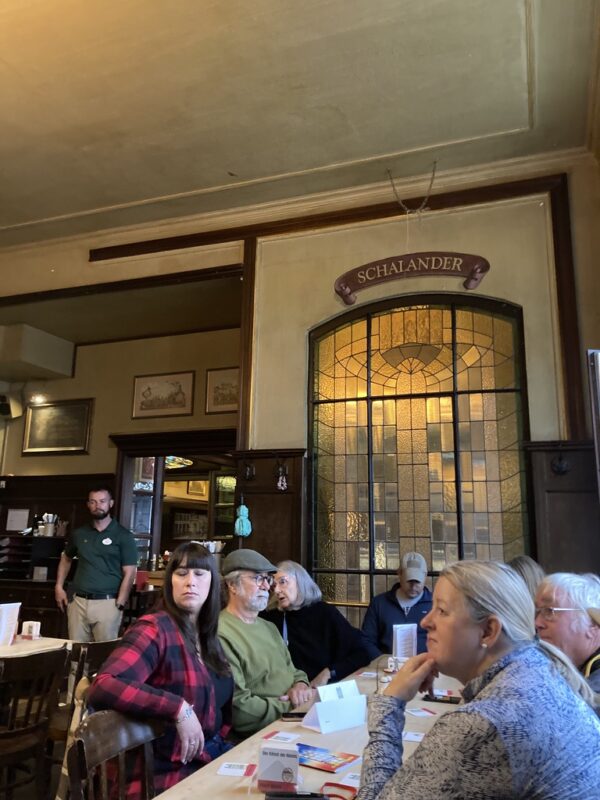
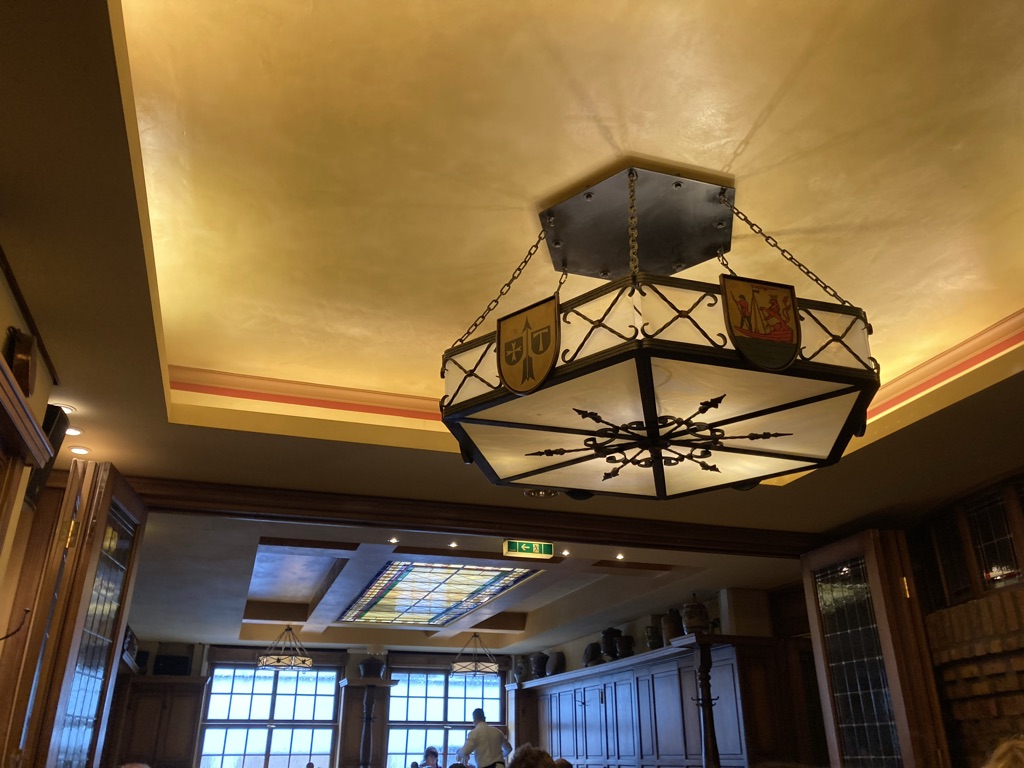
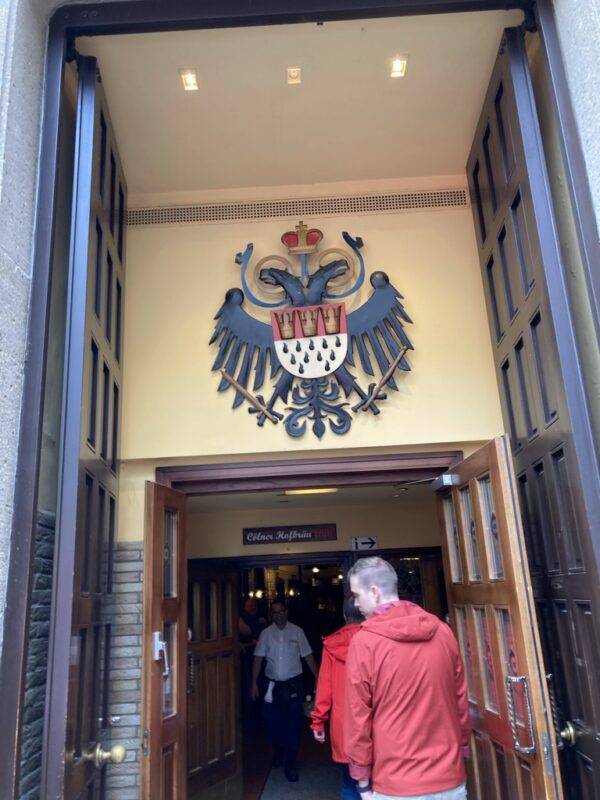
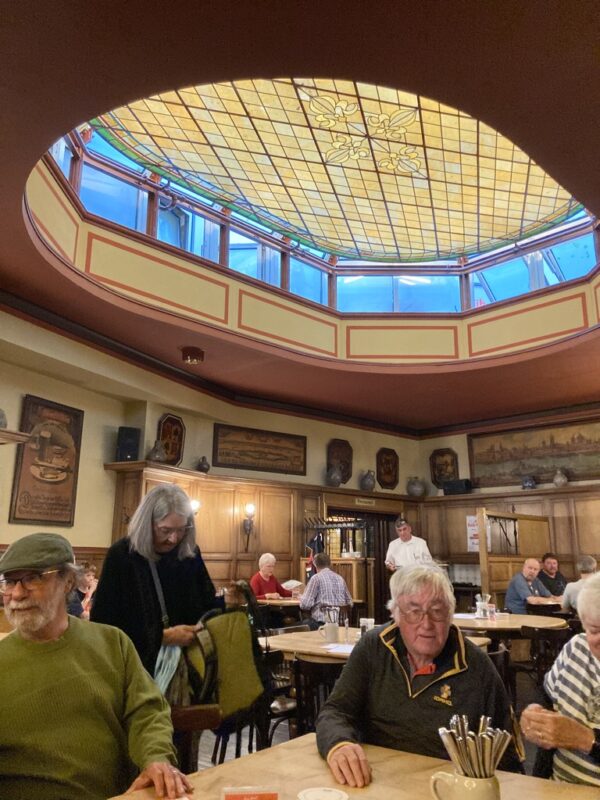
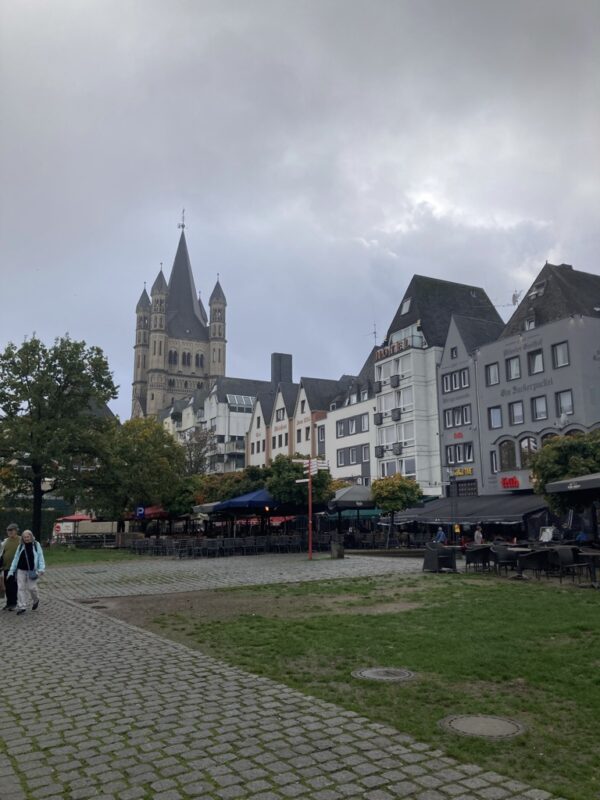
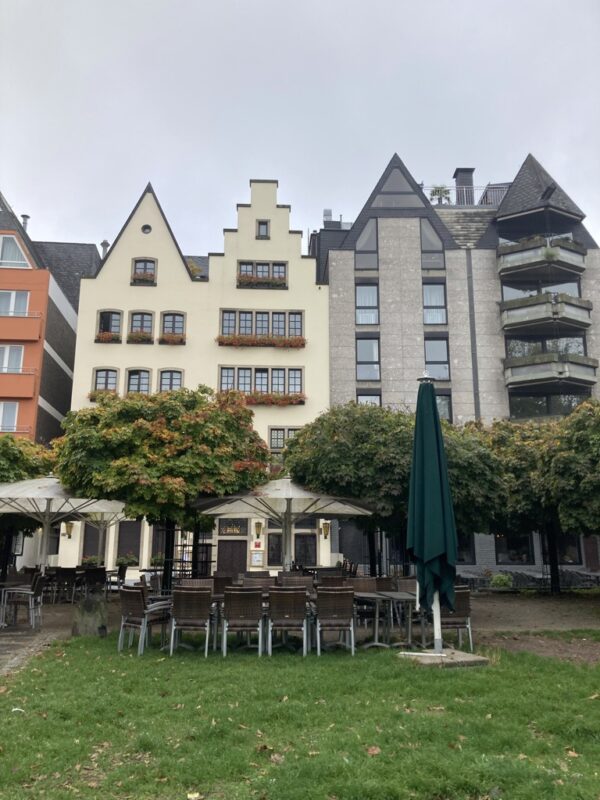
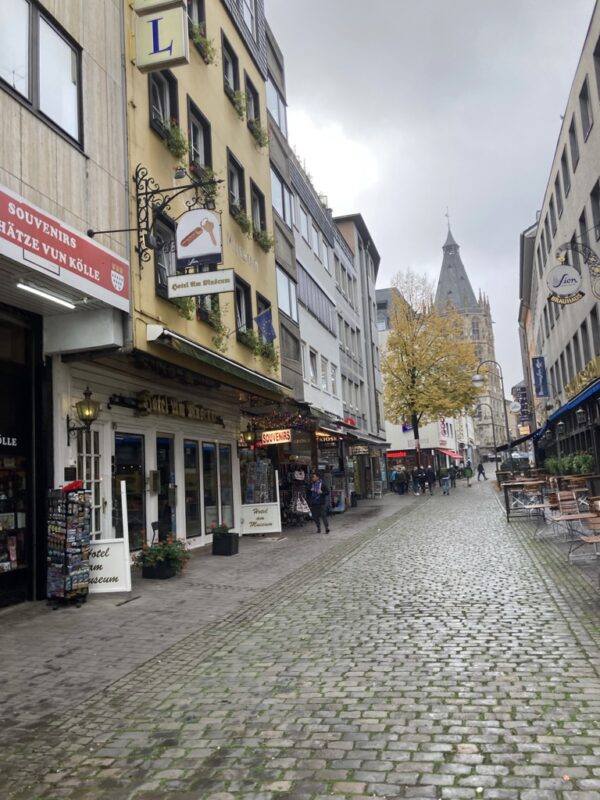
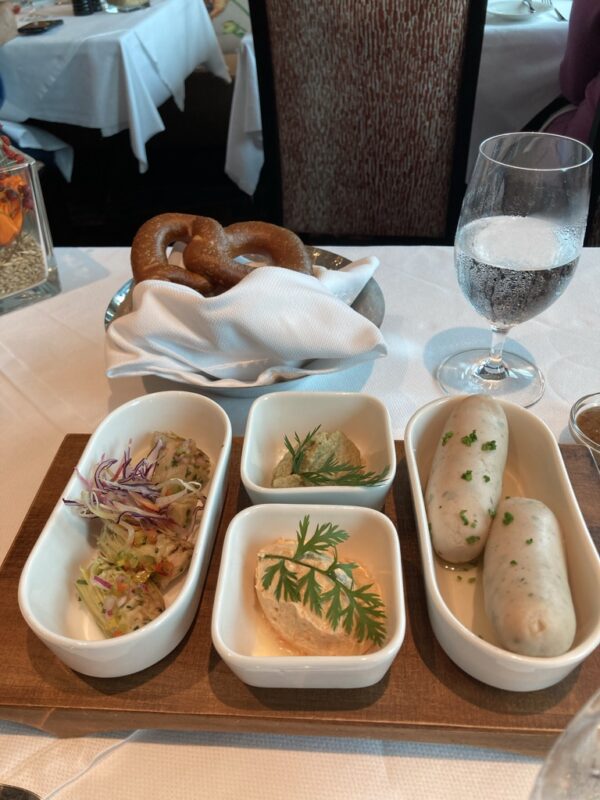
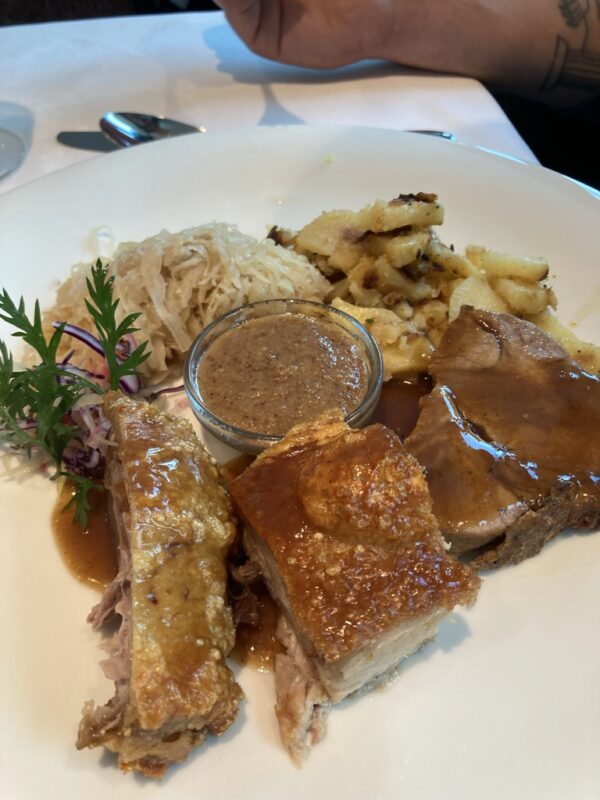
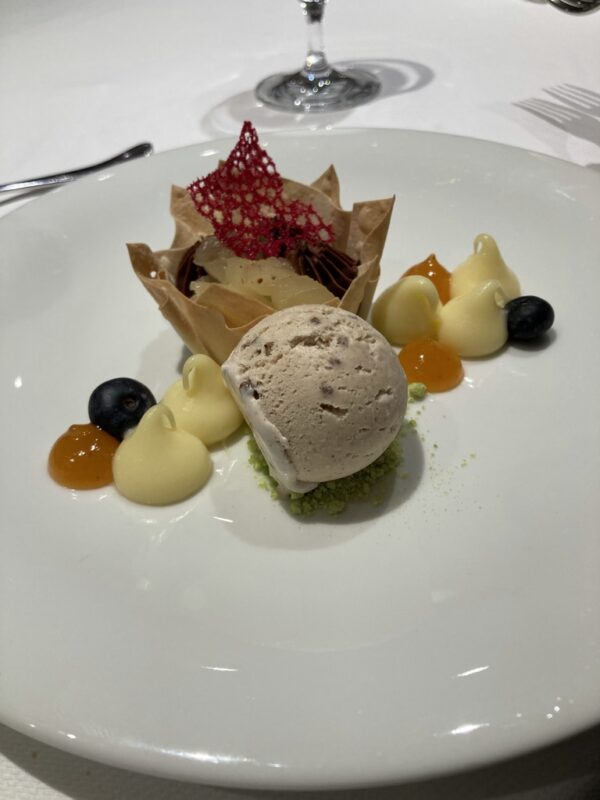
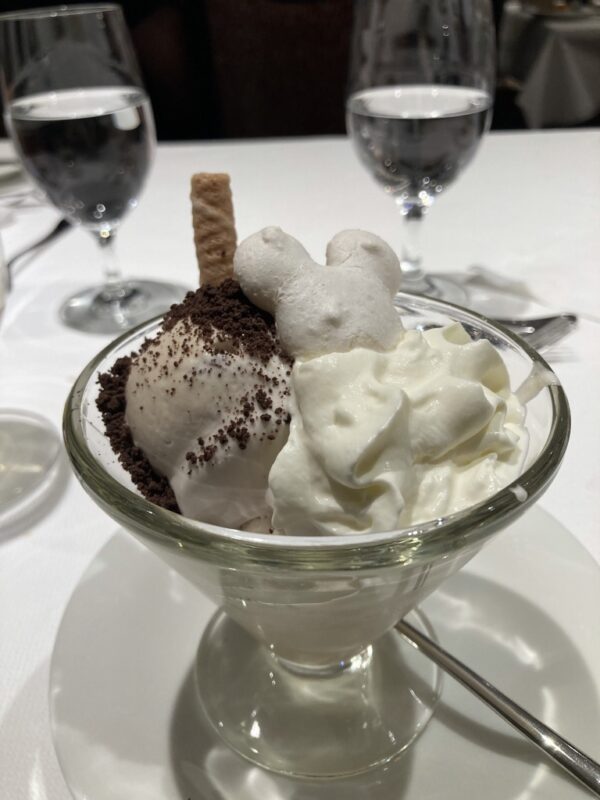
The food looks awesome and I’m sure tasted fantastic!
The pictures we great, I liked the contrast between the brightly colored homes and the Cathedral. Your stories as usual were wonderful. Looking forward to the next chapter!!